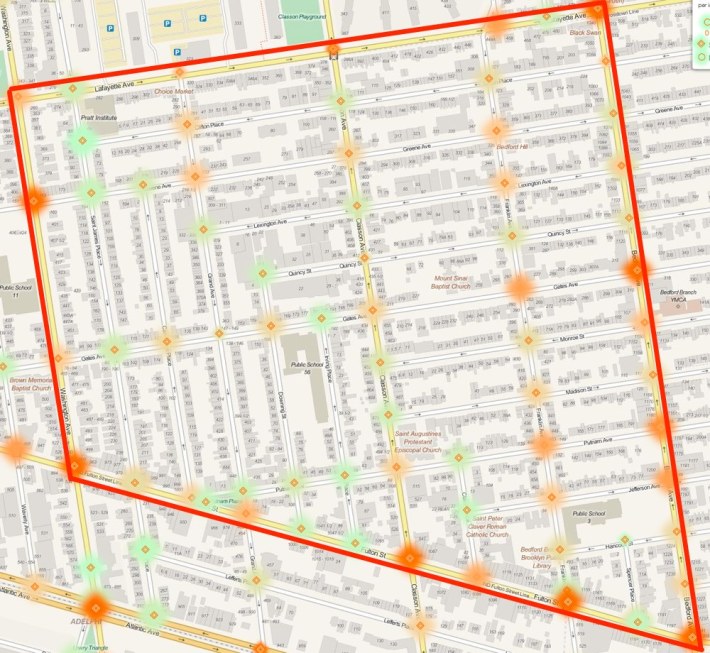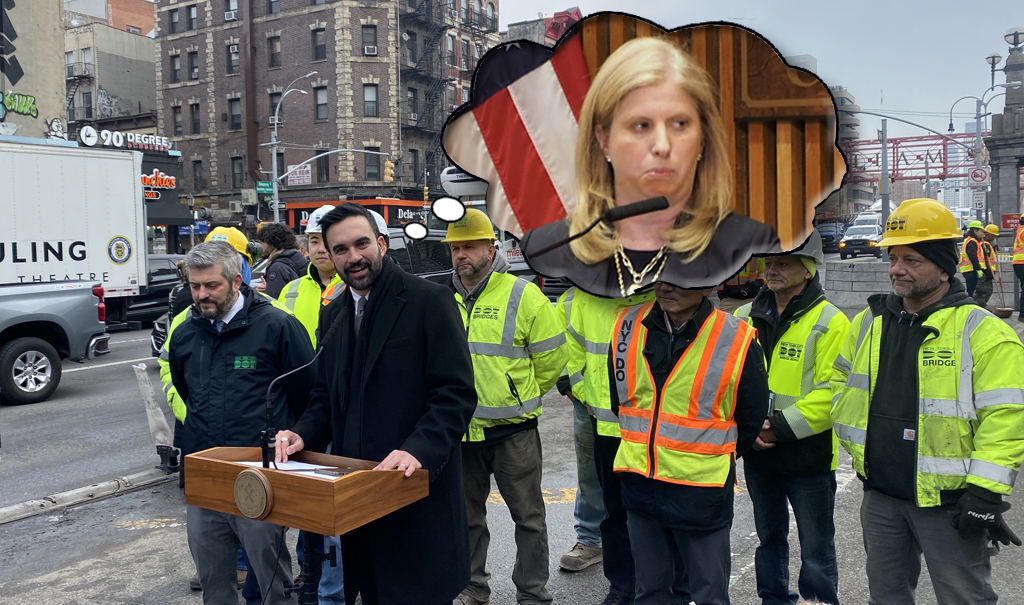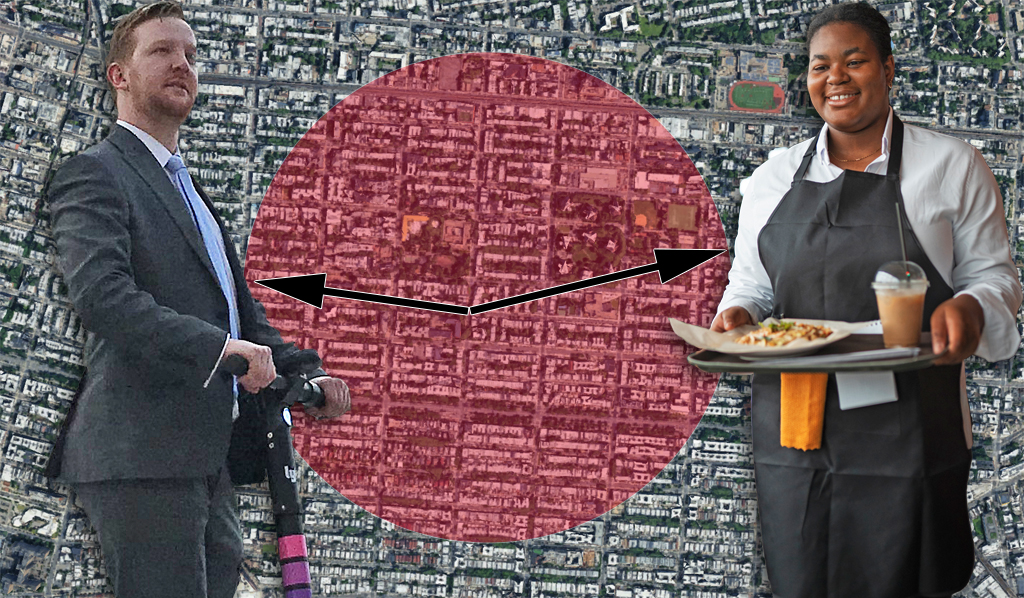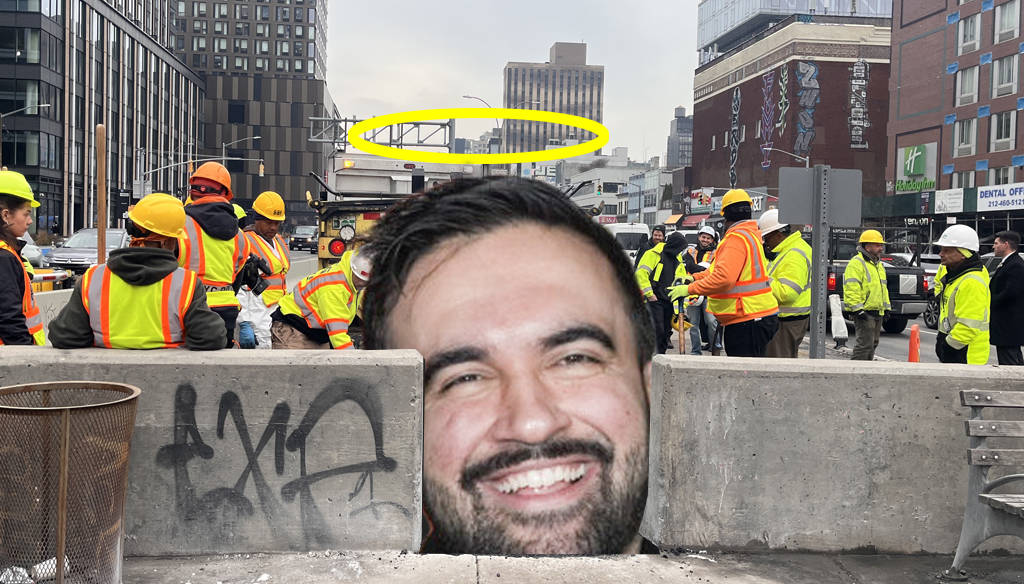
On Monday, Brooklyn Community Board 3 voted against a Slow Zone in a crash-prone area that encompasses parts of Bedford-Stuyvesant and Clinton Hill. Opponents said slowing down drivers would cause gridlock, and the board doubted that slower speeds would reduce crashes, according to DNAinfo.
The proposed zone is bordered by Washington Avenue, Lafayette Avenue, Bedford Avenue, and Fulton Street. DOT data show the .2-square mile area has an average of 62.4 traffic injuries a year, and six severe injuries or fatalities per road mile. There are four schools inside the zone and eight pre-K or daycare centers. Scores of pedestrians and cyclists were injured by motorists within the proposed zone area between August 2011 and December 2013, according to NYPD data mined by NYC Crashmapper.
DOT only proposes Slow Zones where residents apply for them. DNAinfo reported that 14 local groups and officials endorsed the Clinton Hill/Bed-Stuy zone, which is one of five slated to be installed this year. The Community Board 2 transportation committee voted in favor of the Slow Zone last month, with a vote by the full board expected Wednesday.
After a 45-minute presentation from DOT, CB 3 members voted 27-4 against writing a letter of support.
[T]he department struggled on Monday to make its case for the plan with a presentation critics called confusing. They said it lacked specific details on how the plan would lead to a decrease in accidents.
"Was there a traffic study done?" asked board secretary Kimberly Hill. "Your presentation lacks the data necessary for us to feel comfortable and confident."
"Classon Avenue is a traffic jam during the morning hours, and they blow their horns and blow their horns," said Demetrice Mills, president of the Classon-FulGate Block Association, which rescinded its support for the zone. "Making the speed limit even slower will make things even worse."
First, if people are honking, they're already going slower than 20 miles per hour. A 20 mph zone won't make gridlock worse, but it will slow drivers on streets where they are currently able to drive at unsafe speeds.
There is no debating that in the event of a collision, lower speeds save lives. Within London's 20 mph zones, serious injuries and fatalities dropped by 46 percent, and deaths and serious injuries suffered by children decreased by 50 percent.
As far as the call for a traffic study, the injury figures are the study. A Slow Zone doesn't change the capacity of a street or, for instance, alter where and how drivers can make turns. All it does is add speed humps and signage to streets that meet Slow Zone criteria.
CB 3's opposition to life-saving infrastructure is completely baseless, and threatens the well-being of pedestrians of all ages in Bed-Stuy and Clinton Hill. With community support for this Slow Zone beyond CB 3, its progress will be a test of NYC's commitment to Vision Zero.





